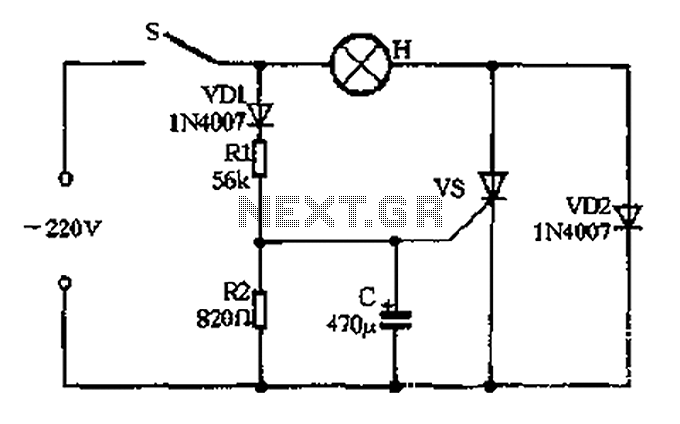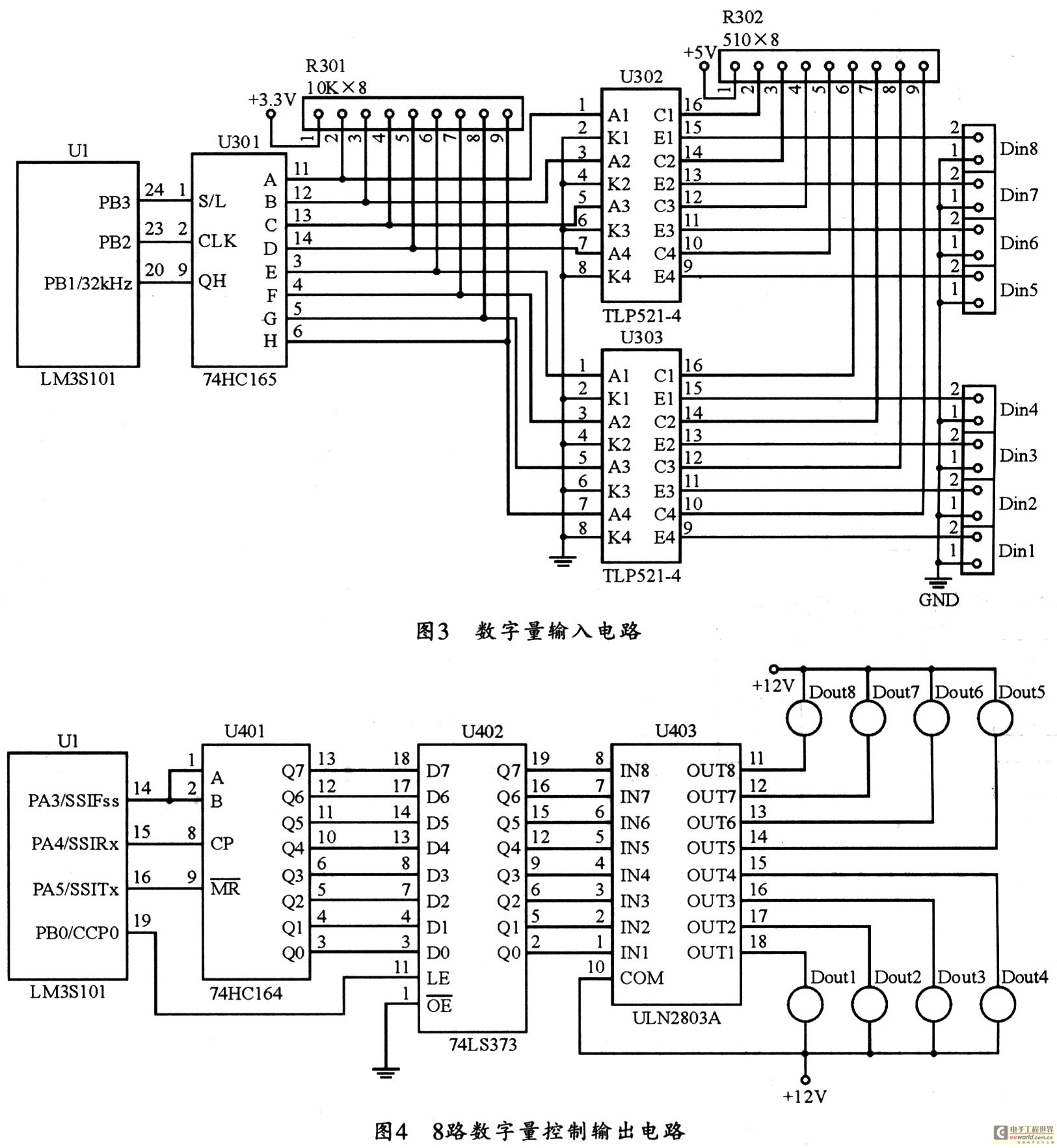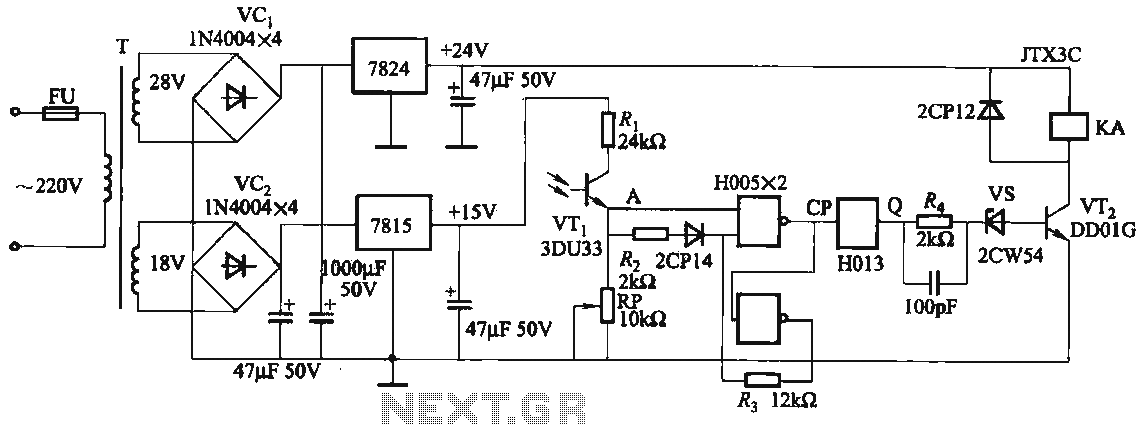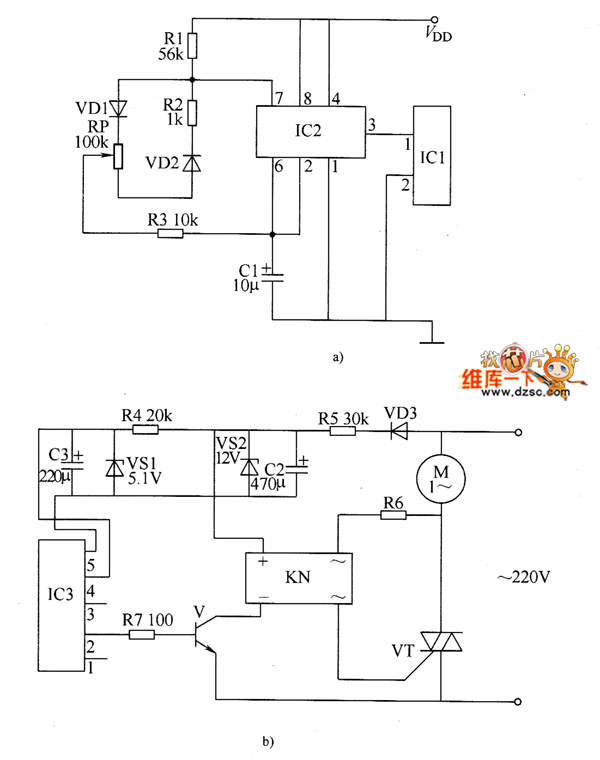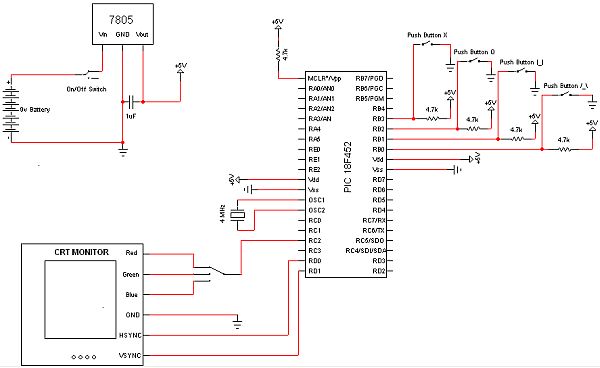
Pulse Width Modulation PWM Controller Board for DC Loads/devices
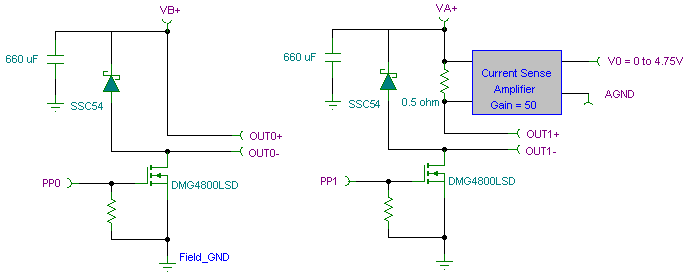
The PWM pulse width modulation controller board enables 9S12/HCS12 microcontrollers or PIC microcontrollers to output 8 channels, each capable of delivering 5 DC amps, while incorporating current sensing for the PWM waveform. This PWM driver circuit is suitable for applications involving valves, motor drivers, solenoids, heaters, or other high-current devices. The PWM circuit effectively converts the PWM outputs from Freescale 9S12/HCS12 MCUs or PIC microcontroller logic levels into high current using MOSFET open-drain low-side drivers.
The PWM controller board is designed to facilitate precise control of various high-power devices through pulse width modulation techniques. Each of the 8 output channels is engineered to handle a maximum current of 5 DC amps, making it suitable for demanding applications. The integration of current sensing capabilities allows for real-time monitoring of the output current, ensuring that the system can respond to changes in load conditions and prevent overheating or damage to the connected devices.
The use of MOSFET open-drain low-side drivers is critical in this design, as it allows for efficient switching of high currents while maintaining low on-resistance. This results in minimal power loss and improved thermal performance. The circuit’s architecture supports the direct interfacing of PWM signals from both Freescale 9S12/HCS12 microcontrollers and various PIC microcontrollers, providing versatility in application and ease of integration into existing systems.
The PWM controller board can be utilized in various applications, including but not limited to industrial automation, robotics, and automotive systems, where precise control of motors, valves, or heaters is essential. The ability to modulate the duty cycle of the PWM signals enables fine-tuning of the output power, allowing for smooth operation and improved efficiency of the connected devices.PWM pulse width modulation controller board allows 9S12/HCS12 microcontroller or PIC microcontrollers to output 8 channels at 5 DC amps each with current sensing of the PWM waveform. PWM driver circuit for valves, PWM motor driver, solenoids, PWM heaters or other high current devices.
PWM circuit converts Freescale 9S12/HCS12 MCU PWM outputs or PIC microcontroller PWM logic level outputs to high current using MOSFET open-drain low-side drivers.. 🔗 External reference
The PWM controller board is designed to facilitate precise control of various high-power devices through pulse width modulation techniques. Each of the 8 output channels is engineered to handle a maximum current of 5 DC amps, making it suitable for demanding applications. The integration of current sensing capabilities allows for real-time monitoring of the output current, ensuring that the system can respond to changes in load conditions and prevent overheating or damage to the connected devices.
The use of MOSFET open-drain low-side drivers is critical in this design, as it allows for efficient switching of high currents while maintaining low on-resistance. This results in minimal power loss and improved thermal performance. The circuit’s architecture supports the direct interfacing of PWM signals from both Freescale 9S12/HCS12 microcontrollers and various PIC microcontrollers, providing versatility in application and ease of integration into existing systems.
The PWM controller board can be utilized in various applications, including but not limited to industrial automation, robotics, and automotive systems, where precise control of motors, valves, or heaters is essential. The ability to modulate the duty cycle of the PWM signals enables fine-tuning of the output power, allowing for smooth operation and improved efficiency of the connected devices.PWM pulse width modulation controller board allows 9S12/HCS12 microcontroller or PIC microcontrollers to output 8 channels at 5 DC amps each with current sensing of the PWM waveform. PWM driver circuit for valves, PWM motor driver, solenoids, PWM heaters or other high current devices.
PWM circuit converts Freescale 9S12/HCS12 MCU PWM outputs or PIC microcontroller PWM logic level outputs to high current using MOSFET open-drain low-side drivers.. 🔗 External reference
